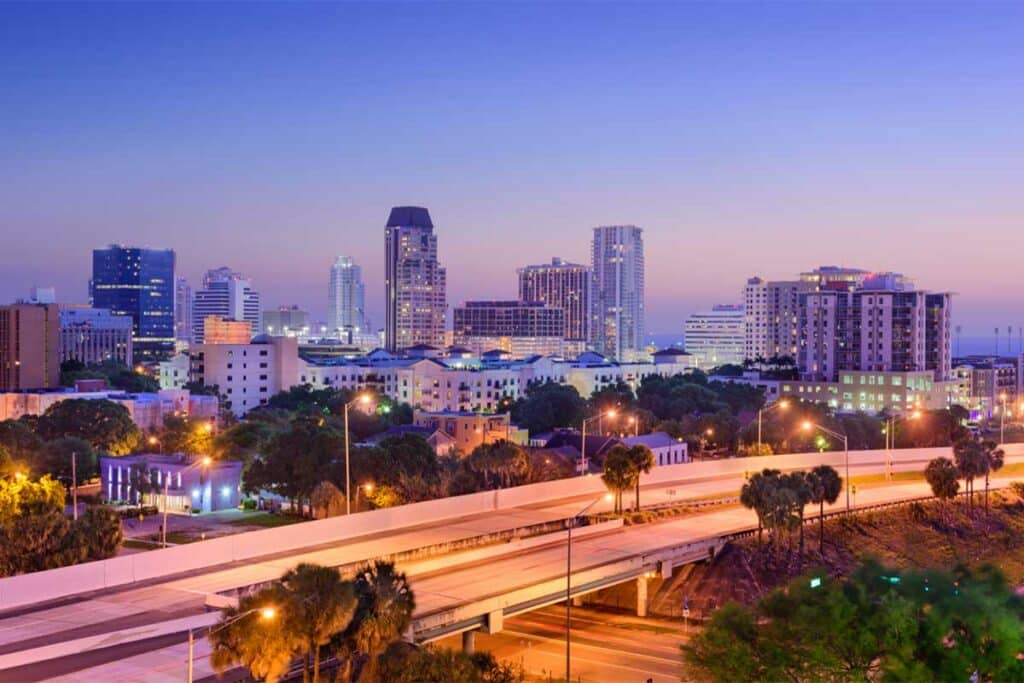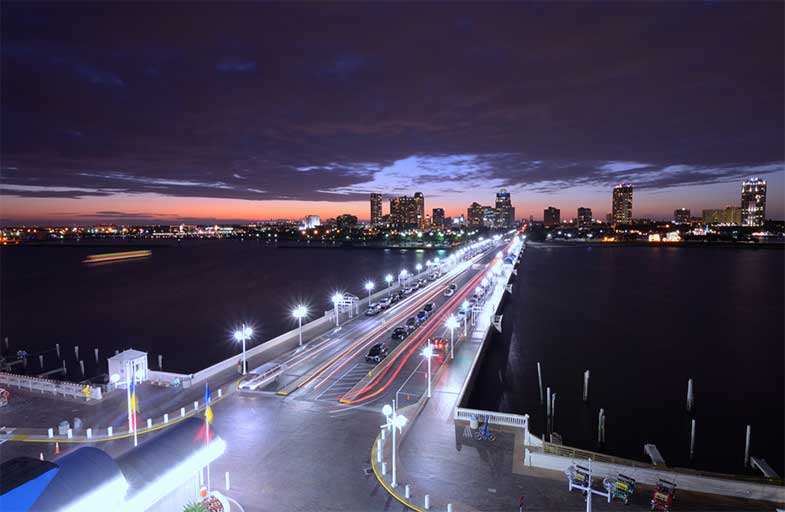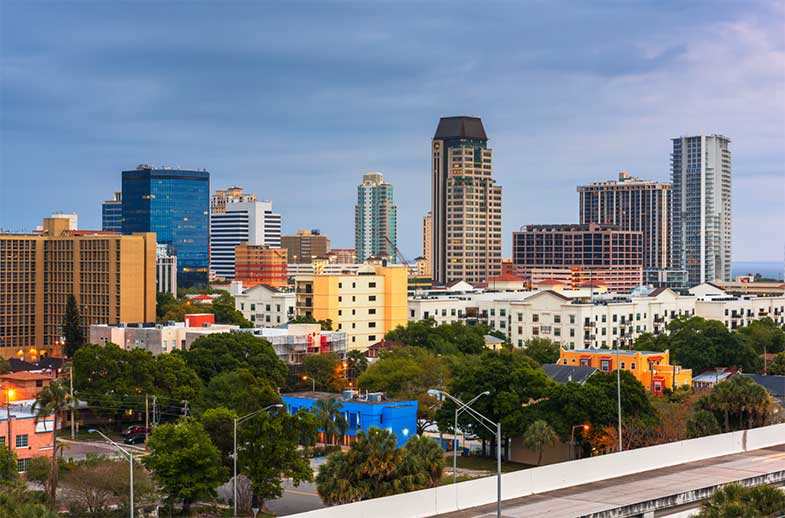St. Petersburg, Florida, is an ideal destination for those drawn by the state’s warm climate and attractions. But if you’re planning to take up residency in the city, you must have wondered if it is safe. Is St. Petersburg, Florida safe?
St. Petersburg is generally safe, especially in neighborhoods like Central Oak Park and Crescent Lake. However, there are some places to avoid, such as Mid-town, South St. Petersburg, and Bartlett Park. Just like in any city, be cautious of your surroundings and use common sense.
If St. Petersburg is among your choices to relocate or visit, read on to get an in-depth look at the city. This article covers basic information about St. Pete and what to expect regarding people, neighborhoods, crime statistics, and the best places that put it on the map.

St. Petersburg, Florida in a Nutshell
As of 2020, St. Petersburg, which is in Pinellas County, is the fifth most populated city in Florida (2.8 million), 15 percent of which are 65 and above. Considered the second-largest Floridian city (about 131 square miles), St. Petersburg is nestled between Tampa Bay and the Gulf of Mexico, connecting to mainland Florida in the north.
Three bodies of water border it:
- Old Tampa Bay
- Middle Tampa Bay
- Lower Tampa Bay
St. Petersburg is also fondly called by locals as St. Pete, living up to Florida’s warm image with an average of 361 days of sunshine. Earning the moniker ‘The Sunshine City,’ St. Petersburg landed a spot in the Guinness World Record for the most days of sunshine (768 days between 1967 and 1969).
Downtown St. Petersburg has many people enjoying walks, eating at cafes, and walking their dogs. Overall, St. Petersburg is active with people day and night.
Other Notable Records
- American Style magazine ranked St. Petersburg as a top midsized city for its vibrant art scene, calling it ‘One of the Best Street Art Cities in the World.’
- According to the Travel US News, the city is one of the top three places to visit in Florida.
- It is the seventh-best place to retire, according to CNN.
- St. Petersburg is among the ‘Top Cities to Visit’ in the 33rd Annual Conde Nast Traveler 2020 Reader’s Choice Awards.
Is St. Petersburg Expensive?
Downtown St. Petersburg is the city’s Central Business District populated by high-rise establishments. However, despite the somewhat upscale neighborhoods in St. Petersburg, the cost of living in the city is reasonably within the budget.
Housing expense is 7% lower than the Floridian average, while 29% lower nationally. Plus, there is no state income tax across Florida.
Also, if your average annual income is about $80k, you’d live more comfortably in St. Petersburg. Costs like dining, accommodations, and entertainment are less expensive in this city compared to other areas like Tampa.
Living in St. Petersburg (Pros and Cons)
St. Petersburg neighborhoods have individual perks and setbacks. Here are some of them.
Pros
- A centrally located neighborhood gives you easy access to downtown and the beaches.
- Housing is within budget despite proximity to downtown amenities like great restaurants and shops.
- St. Petersburg is an inviting scene of arts, music, and sports, whether you’re young or young-at-heart.
- Restaurants offer mouth-watering dishes, and you’d find several gelato shops within a block.
- The presence of the police force patrolling the streets is impressive.
Cons
- Traffic is heavy if you’re in a central neighborhood.
- Driving is a challenge, with a sizeable population of drivers aged 70 years old and above.
- While the city has choice beaches, the summers are hot and humid.
- Properties get more expensive the closer you get to water or outer islands.
How Safe Is It to Live in St. Petersburg, FL?

Compared to other cities in Florida, living in St. Petersburg is 21% safer while only 11% higher across the US. Overall, crime in St. Petersburg, Florida, is considered below average compared to other US cities.
St. Petersburg, Florida Crime Rate
According to areavibes.com, the following crime statistics in St. Petersburg are from the 2019 calendar year.
- The crime rate is 53% higher than the national average.
- Violent crime is 57% higher compared to the US average.
- The yearly decrease in crime occurrence is 3%.
- Property crime is 1.5 times more than the Floridian and US averages.
Factors to Consider Before Moving to St. Petersburg
If you’re planning to relocate to St. Petersburg, here are some factors to consider before calling the movers:
- Work Opportunities. The unemployment rate in the city is about 5% as of 2020. The job market saw a 2.3% increase from 2019 and predicts a job growth to 42% over the next 10 years.
- Weather. Summers could be extremely warm. Winters are generally gentle, but the northern part experiences true winter. Fall and spring seasons are wonders to experience, too, especially if you live near the coast.
- Neighborhoods. Most of the city’s historic districts, out of over 100 communities, are near the bay. Art galleries and commercial skyscrapers are in Eastern Central, while Downtown St. Petersburg is the city’s central business district. Northeast is a shopping district and where you’d find small residential high rises. South of downtown is the historic Roser Park which is home to eclectic and Mediterranean housing.
- Demographics. Nearly 69% of the population are white as of the 2010 census reading. The remaining percentage is a mix of African Americans, Asians, Native Americans, Chinese, and Hispanics.
St. Petersburg, Florida – Best Places to Live
The word ‘best’ is subjective. However, depending on your set priorities, the selection of neighborhoods below would give you a bird’s-eye view of why people decide to move to St. Petersburg.
Central Oak Park
Lining the brick streets are houses of diverse architectural designs that date as far back as 1920. Mature trees offer welcoming shades while sidewalks encourage leisure walks. Central Oak Park also is dog-friendly, with the Gulf of Mexico merely 5 minutes away for a perfect beach getaway.
The demographics here are families and young adults.
Crescent Lake
A small community with only about 1,000 residents, Crescent Lake’s core is a 54-acre park and lake. It has playgrounds for kids, parks for dogs, and walking trails for you to navigate. The homes in this neighborhood carry architectural styles like Dutch Colonial, Tudor, Spanish Eclectic, and Ranch.
You’d sense a quaint historic ambiance in this neighborhood.
Fossil Park
North of St. Petersburg is this well-kept neighborhood populated mainly by families. With about 5,000 residents, you’d have equal choices between suburban and urban living whether you wish to purchase or rent.
With a responsive police force, crime at Fossil Park is suggested to be minimal. The streets are also well lit with lots of wildlife considering the park their home.
Since Fossil Park is across Tampa Bay, you’d be at the ‘edge’ of the flood zone. There’s no threat of flooding, but there’s annual flood insurance to pay.
Historic Kenwood
Undergoing gentrification in the past decade, this neighborhood is among the most favored by those considering a move to St. Petersburg.
It’s considered a heritage location of over 2,000 historic homes that are 50 feet above sea level. Adding character to this community are brick sidewalks and canopies of shade-giving trees like pines, jacaranda, and oaks.
The once crime hotspots are also up for demolition and development, giving rise to a friendly population of about 3,500.
Are There ‘Bad’ Areas in St. Petersburg, FL?
If you’re wondering, ‘Is St. Petersburg, Florida safe?’ it would be wise to stay clear of the following areas:
- Mid-town and South St. Petersburg. Gun violence is high in these areas, and crime is supposedly underreported.
- Bartlett and Jordan Parks. South of Bayfront Hospital into Bartlett Park is believed to be drug-infested and crime ripe. In recent years, however, gentrification has been giving the areas a facelift.
- Child’s Park. Around 18th Avenue, you’d find some bad blocks in this area, although it has seen some improvements in the last 5 to 10 years.
Safety Precautions

St. Petersburg is just like any other city: some parts are challenged by crime while other areas are great places to live in. Wherever you’d be in St. Petersburg, keeping close to the practices below allows you to maximize your comfort and peace of mind.
- Visit the closest police department that covers the area. The police force is an excellent source of anything crime-related, as well as the neighborhoods that you must avoid.
- Always lock the doors in your house, even your cars. Locks aren’t guarantees against theft but could deter the event of one.
- If you’re planning a nightcap, avoid going alone.
Conclusion: Is St. Petersburg, Florida, Safe?
St. Petersburg is a varied mix of neighborhoods, and within these communities are areas with equally varying levels of safety.
However, if you maintain a keen sense of your home, places you visit, and activities you indulge in, you’d find that St. Petersburg gives a balanced mix of urban and suburban living. From the city’s bustling nightlife and dining pleasures to the inviting beaches for water sports, St. Petersburg is a great place to live.
